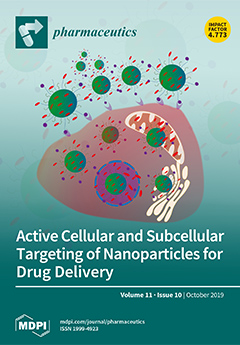Open AccessReview
Strategies for Delivery of siRNAs to Ovarian Cancer Cells
by
Rossella Farra, Matea Maruna, Francesca Perrone, Mario Grassi, Fabio Benedetti, Marianna Maddaloni, Maguie El Boustani, Salvo Parisi, Flavio Rizzolio, Giancarlo Forte, Fabrizio Zanconati, Maja Cemazar, Urska Kamensek, Barbara Dapas and Gabriele Grassi
Cited by 19 | Viewed by 6352
Abstract
The unmet need for novel therapeutic options for ovarian cancer (OC) deserves further investigation. Among the different novel drugs, small interfering RNAs (siRNAs) are particularly attractive because of their specificity of action and efficacy, as documented in many experimental setups. However, the fragility
[...] Read more.
The unmet need for novel therapeutic options for ovarian cancer (OC) deserves further investigation. Among the different novel drugs, small interfering RNAs (siRNAs) are particularly attractive because of their specificity of action and efficacy, as documented in many experimental setups. However, the fragility of these molecules in the biological environment necessitates the use of delivery materials able to protect them and possibly target them to the cancer cells. Among the different delivery materials, those based on polymers and lipids are considered very interesting because of their biocompatibility and ability to carry/deliver siRNAs. Despite these features, polymers and lipids need to be engineered to optimize their delivery properties for OC. In this review, we concentrated on the description of the therapeutic potential of siRNAs and polymer-/lipid-based delivery systems for OC. After a brief description of OC and siRNA features, we summarized the strategies employed to minimize siRNA delivery problems, the targeting strategies to OC, and the preclinical models available. Finally, we discussed the most interesting works published in the last three years about polymer-/lipid-based materials for siRNA delivery.
Full article
►▼
Show Figures






